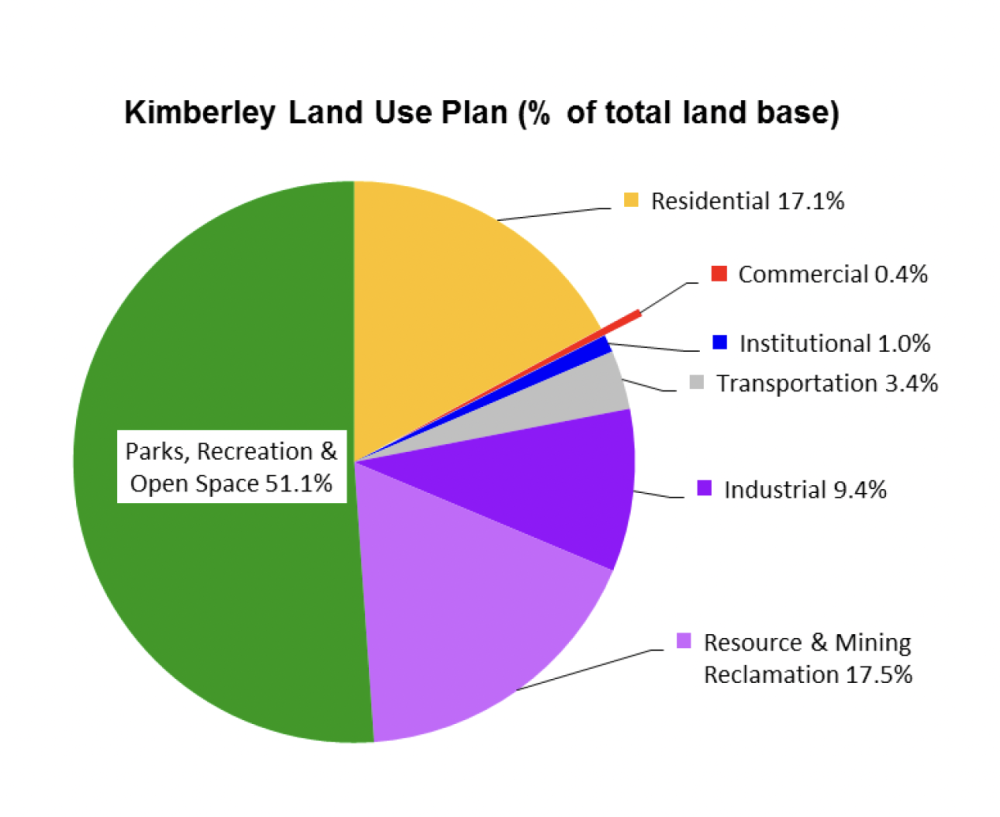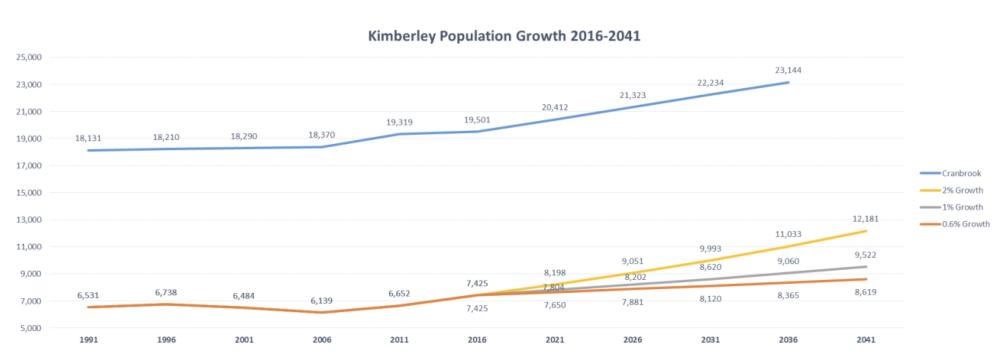
Kimberley Official Community Plan
2.0 CONTEXT
2.1 Land Base
Building a complete community requires space to live, work and play, which involves managing land uses to allow for a wide range of residential, commercial, employment and recreational activities.
The City of Kimberley municipal boundary covers over 61km2 (more than 15,000 acres). Consistent with our community values, more than half of the land base is designated for parks, open space and recreational uses including large segments such as the Kimberley Nature Park, Kimberley Nordic Centre, three golf courses and Kimberley Alpine Resort. More than 17% of the total land base is designated for current and future residential use. Lands designated for commercial and industrial uses make up approximately 10%.
Reclaimed mining lands that are largely unavailable for redevelopment or other economically productive uses represent about 17%. Lands designated for institutional represent about 1% of the land base. Finally, nearly 3.5% of the land base is dedicated for the road transportation network and is not available for other development.

2.2 Future Growth
Kimberley has undergone several fluctuations in population over the last two decades. The population faced a -8.9% population decline between 1996 and 2006 due in large part to the closure of the Sullivan Mine in 2001. This trend has since reversed with the community growing at 8.4% or approximately 1.7% annually between 2006 and 2011, and at 11.6% or approximately 2.3% annually between 2011 and 2016.

A moderate level of growth of around 0.6% or about 1,200 people is anticipated over the next 25 years. This reflects the average growth trend from the last 25 years. An average of 20 to 25 new dwelling units per year will be needed to accommodate the anticipated population growth. Most of this residential growth can be accommodated utilizing existing infrastructure capacity in and near existing neighbourhoods through infill and redevelopment. Approximately 35% of the lands designated for future residential development are large vacant parcels that will require expansion of utilities and roads.
Although the commercial land base is relatively small, a significant portion is underutilized, unimproved or aged and in need of significant retrofit. Substantial commercial growth can be accommodated through infill and redevelopment of existing properties and would benefit from utilizing existing infrastructure capacity. Most of the land base designated for industrial is underutilized or unimproved and can accommodate significant new growth.
It should also be understood that Kimberley, as a resort community, maintains a significant number of residential properties that serve primarily recreational purposes and are only occupied seasonally. The demand for seasonal properties in Kimberley continues to grow with the current census showing the number of residential units being constructed out pacing population growth. The 2016 census revealed that 78.8% of private dwellings were occupied by their usual resident(s).* Which, when compared to previous census years reveals a trend of an increasing proportion of private dwellings that were not occupied by their usual resident(s). Between 2006 and 2016 the percentage of private dwellings that were not occupied by their usual resident(s) increased by 9.0% from 12.2% to 21.2% (0.9% per year). This statistical change alludes to the presence of a growing ‘shadow population’ that owns recreation properties in Kimberley but are not full-time residents. The presence of this growing ‘shadow population’ has substantial implications for future planning and development in Kimberley.
* Private dwellings occupied by usual residents refer to “a private dwelling in which a person or a group of persons is permanently residing. Also included are private dwellings whose usual residents are temporarily absent on May 10, 2016” (StatCan, 2017)